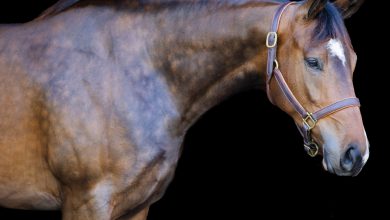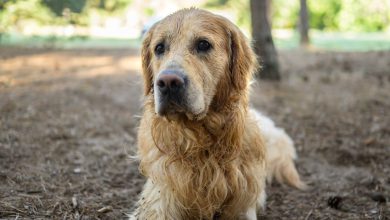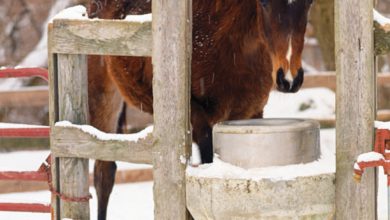Decoding the Diseases Examined by AQHA’s Six-Panel Test
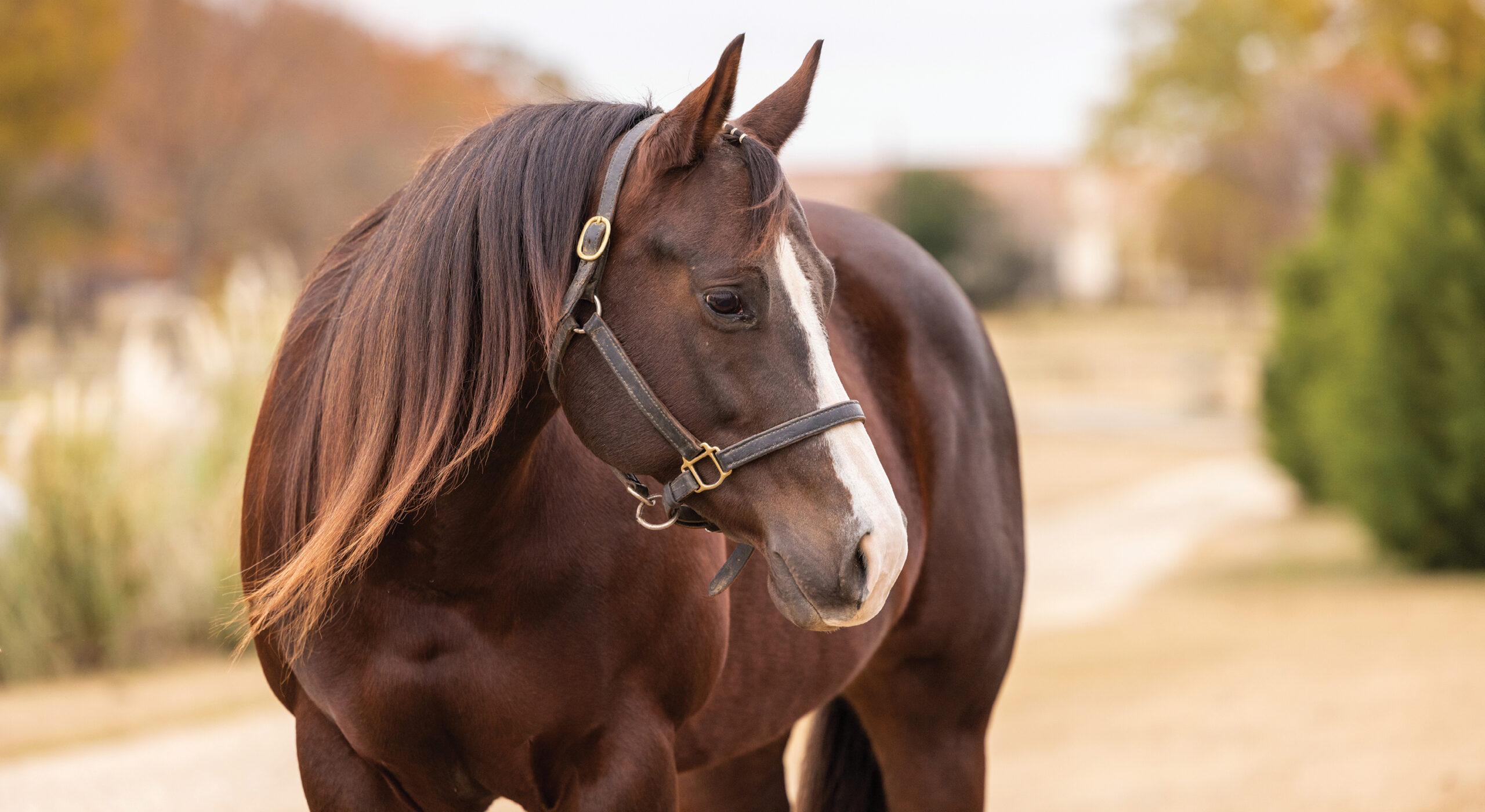
The six-panel test is a diagnostic tool used to assess the genetic predispositions of horses.
It’s meant to discover if a horse has or is a carrier for certain hereditary diseases and traits.
While the test is done primarily for American Quarter Horses, several genetic diseases detected by the six-panel test occur in other breeds. For AQHA breeding stock, the results are required for a horse’s record and certificate of registration.
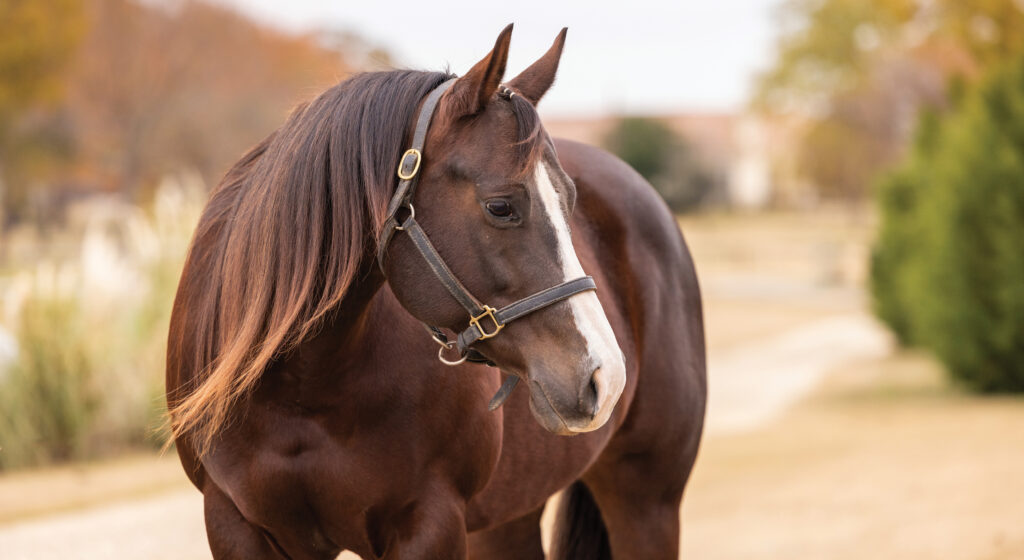
Glycogen Branching Enzyme Deficiency Disorder (GBED)
What is it? GBED is an autosomal recessive disease caused by a mutation of the GBE gene, which reduces the function of the glycogen branching enzyme. As a result, cardiac and skeletal muscle, the liver, and the brain cannot store or mobilize glycogen. Glycogen’s primary function in the body is to provide energy to the muscles so without the ability to use it, a horse will experience muscle weakness and death.
Since it’s a recessive mutation, a horse must inherit two copies of the mutated gene, from the mare and stallion to be affected.
Is it manageable? No, in all cases a horse born with this disorder will die, typically as a foal. Because of this, you may not want to breed a horse that’s a carrier.
Hereditary Equine Regional Dermal Asthenia Disorder (HERDA)
What is it? HERDA is an autosomal recessive disease caused by a mutation in the peptidyl-prolyl isomerase B (PPIB) gene, which causes hyper-elasticity in the skin. HERDA causes collagen—the material that makes your skin stretch and return to place—not to form properly. This causes the horse’s skin to injure easily, leading to severe scarring, open wounds, nicks, and scrapes. It’s also sensitive to the sun. It may be unnoticeable until a horse starts training, when the saddle and tack cause severe skin damage.
Since it’s a recessive mutation, a horse must inherit two copies of the mutated gene, from the mare and stallion, to be affected.
Is it manageable? There’s no cure or effective treatment for HERDA; however, it may be managed carefully.
Hyperkalemic Periodic Paralysis Disorder (HYPP)
What is it? HYPP is a dominant disease caused by a mutation in the SCN4A, the sodium channel gene. The channels manage electrical impulses in the muscles to create movement and stimulation. The mutation disrupts this pathway, impacting muscle contraction and causing sporadic muscle tremors, shaking, trembling, weakness, or collapse.
Since it’s dominant, a horse must only inherit the gene from one parent to experience symptoms; however, inheriting it from both parents usually causes more severe symptoms. A horse with two copies of the gene mutation is ineligible for registration with AQHA.
Is it manageable? With proper management, which includes lowering the potassium levels in a horse’s diet and providing regular exercise, many horses can experience minimal symptoms and have successful performance careers.
Malignant Hyperthermia Disorder (MH)
What is it? MH is an autosomal dominant disease in the ryanodine receptor 1 (RYR1), which causes a malfunction in the sarcoplasmic reticulum muscles in response to halogenated anesthetics, succinylcholine, stress, or excitement. The sarcoplasmic reticulum is primarily responsible for storing calcium so during an episode, calcium will be released into the bloodstream and cause painful muscle cramps, elevated body temperature, irregular heart rhythm, sweating, and shallow breathing.
It’s a dominant mutation so only needs to be inherited from one parent.
Is it manageable? Yes, management starts with diet. Susceptible horses should eat plenty of high-quality forage with controlled starch and sugar content. Additionally, Dantrolene can be administered 30 to 60 minutes before anesthesia is given to limit the reaction. During an episode, alcohol, chilled intravenous fluids with sodium bicarbonate, and mechanical ventilation may be used.
Polysaccharide Storage Myopathy Disorder (PSSM)
What is it? PSSM is an autosomal dominant disease caused by a mutation in the glycogen synthase 1 (GYS1) gene, which causes glycogen—sugar or energy—to accumulate in a horse’s muscles. This can lead to mild to severe cramps, sore muscles, and muscle weakness. There are two types of PSSM. PSSM1, tested as part of AQHA’s six-panel genetic test, and PSSM2, can be diagnosed with a muscle biopsy.
Is it manageable? Yes, the primary goal is to manage blood sugar levels. Like MH, horses should be fed a high-forage diet and avoid grains, sweet feeds, and other high-sugar feeds. Horses with PSSM should also be exercised regularly to avoid excess glycogen storage. Along with regular riding, turnout is also recommended for horses that are stalled.
Myosin-Heavy Chain Myopathy (MYHM)
What is it? MYHM is a relatively newly discovered autosomal dominant disease caused by the mutation of the MYH1 gene. It can cause clinical diseases that lead to muscle loss or damage. Immune-Mediated Myositis (IMM) is one disease caused by MYHM that is a result of a response to a vaccine or infection, such as strangles. The immune system detects the muscle cells as foreign and attacks them, causing stiffness, weakness, and muscle mass loss. The second is non-exertional rhabdomyolysis—tying up not caused by exercise. It causes pain and muscle cramping, damage, and loss.
In 2023, MYHM was added to the AQHA’s available testing, taking it from a five- to a six-panel test. It is also a dominant mutation so only needs to be inherited from one parent.
Is it manageable? Yes, but since it functions as an autoimmune disease in response to an incident, symptoms often recur after the first occurrence. Treatment may include administration of dexamethasone and prednisolone as an antimicrobial treatment. Horses with atrophy may need to regain muscle gradually over time. Limiting or staggering vaccines, and especially the live strangles vaccine, may be recommended for horses with the MYH1 mutation.
[READ: 8 Tips to Manage Your Performance Horse’s Joints]